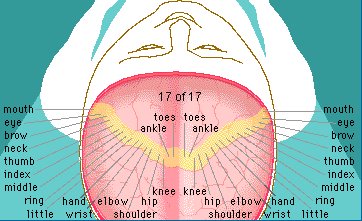The amygdala is the brains alarm, contained deep within our brain. The amygdala is the core of our issues with PTSD, and where we need to start, so you can interpret your own image on how your reactions are forced upon you, instead of the rational decision that often comes second or later, though often too late for the hurtful and spiteful things we say first, from a very misinterpreted and confused amygdala to our output.The above image represents your amygdala. The normal place for the alarm (amygdala) is over to the left, being the safe place. Now, if something very extreme happens, being your traumatic event, the needle is now moved over to the right side, being the war zone. This is now where your needle rests normally. Now conceptualising the above image, your needle is already in alarm mode, so the slightest event will now trigger your internal alarm to react or respond to the most trivial things. It is like your neighbour having a cheap alarm fitted, whilst it detects a burglar, it also detects a passing truck, birds or a football hitting the house. So realistically, we could call your neighbours alarm faulty. Another model to explain this alarm reaction is the PTSD cup explanation.With PTSD, you have developed a similar faulty alarm within your mind, being your amygdala. Unfortunately, each time the alarm goes off, you take it seriously. You may get angry with yourself for allowing your alarm to go off in the first place, though this only makes matters worse. You can no more stop your alarm going off than I could from blinking if I attempt to stick my finger in my eye. Very slowly you can coax your alarm system to move from the extreme right (war zone) backwards towards the Belfast position (being stable, but could explode anytime), then further back to your safe place once again, where a person without PTSD often reside.Achieving this is not merely an intellectual thing, but a combination of mental thought and exposing yourself to things you avoid. It is like learning to swim. You may know with your head that you will float because of Archimedes Principle, but you only know it at an experiential level when you let go of the side wall in the pool. Inevitably getting the alarm back to the correct position is two steps forward and one back, if for example, you hear in the media of a trauma just like yours, the alarm will move over a notch towards the right, or as you expose yourself to self interpreted fears, and real fears surrounding your trauma.The drama of trauma is written by the hippocampal system involving the hippocampus and probably the pre-frontal cortex. This system is aware of what’s going on at the amygdala level and can send a message about how seriously the alarm should be taken. The only opposition to this, is that if a particular traumatic aspect was so traumatic, it may off actually bypassed the hippocampus and burnt itself directly into the amygdala instead. This has an impact on memory recovery.At this point, talking and writing about the trauma, each incident and its effects are a critical aspect in the recovery of lost memories. If you try and block memories when they arise, you will find yourself attempting to think off other things, though the more you try and block the memories, the more you think about them, thus the more symptomatic response. This is only a brief point on this part, as exposure therapy is covered in more detail within the exposure therapy for PTSD thread.The Bubble and Emotional NumbnessThose who experience severe trauma can become very concerned about their numbness or emotional flatness, which tends to make you feel like a bottle of soda without the fizz. Whilst the fizz will not return on its own, it will return gradually and often unexpectedly if you engage in increasing doses of activity. Unfortunately, you will feel as though you reside within a bubble.You will feel as though you cannot connect to others, because of the differing settings of your alarms that they cannot possibly understand if they have not been through the severity of trauma you have. Heroic behaviour means gradually acting opposite to the feeling of flatness and disconnection. To begin with you will feel like a robot going through the motions, but you are pressing into the service part of the brains command / demand system (the anterior cingulate and dorsolateral frontal cortex) that can override fearful messages from the hippocampal / amygdala system, so that over time and with daily practice, the fear may still be there, but it becomes a fear that you are no longer afraid of, more accept it for what it is, a memory.It takes a lot of energy initially in small controlled doses to burst the bubble you feel that you reside within, and reconnect to people once again. You must not blame yourself for the flatness of fizz or being within your bubble, because you are not responsible for the problem, only for working on the solution.
http://www.ptsdforum.org/thread576.html
Tuesday, September 25, 2007
Subscribe to:
Post Comments (Atom)

http://www.windyweb.com/stop.htm














No comments:
Post a Comment